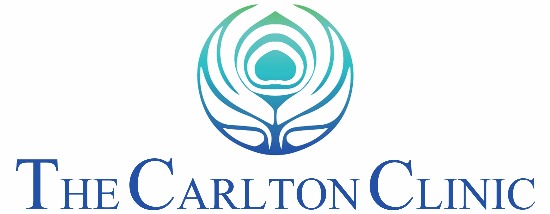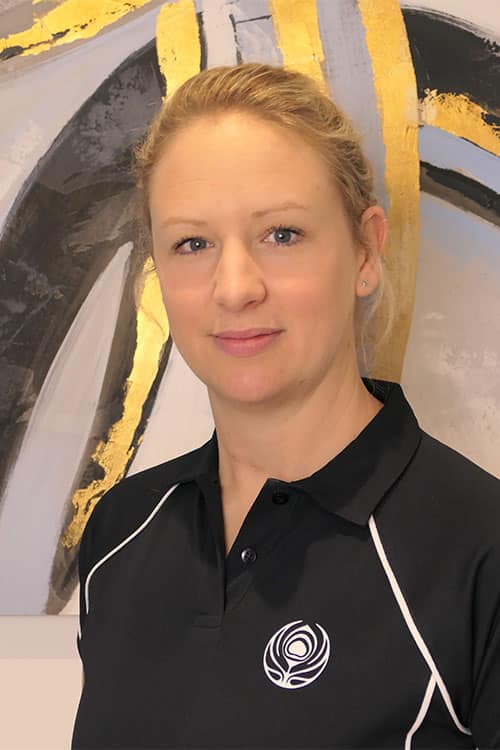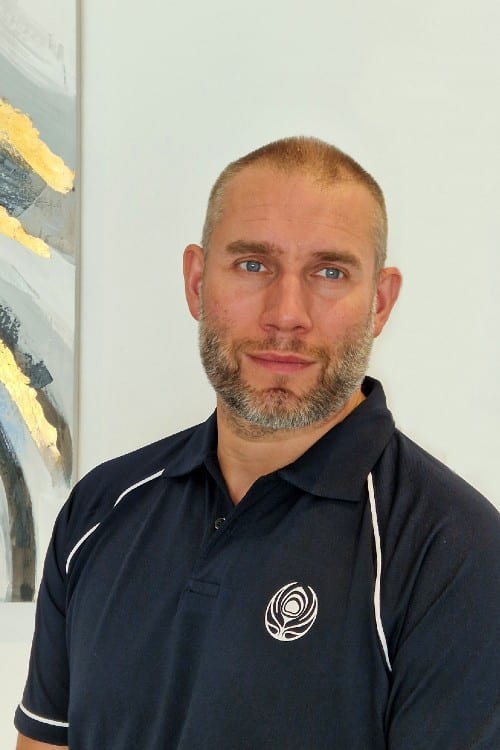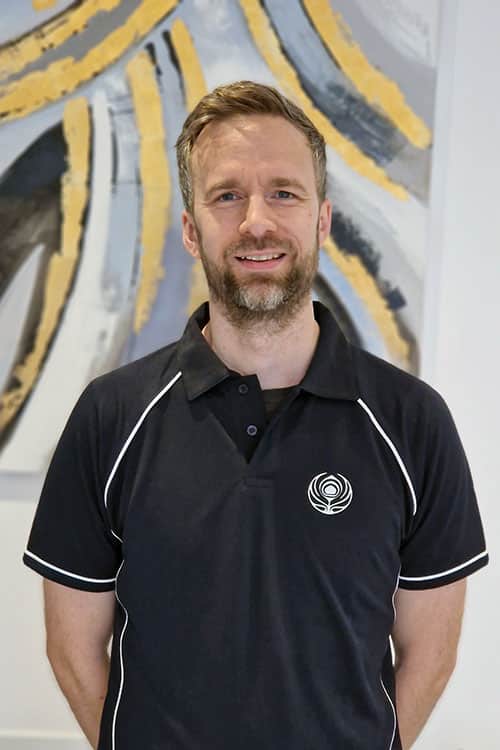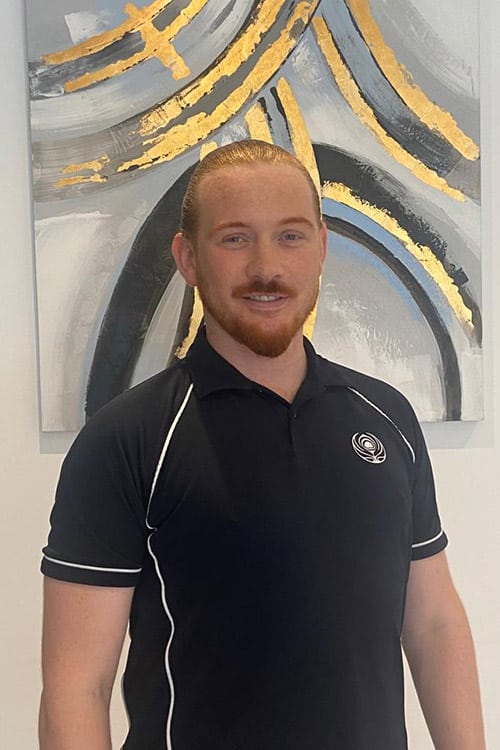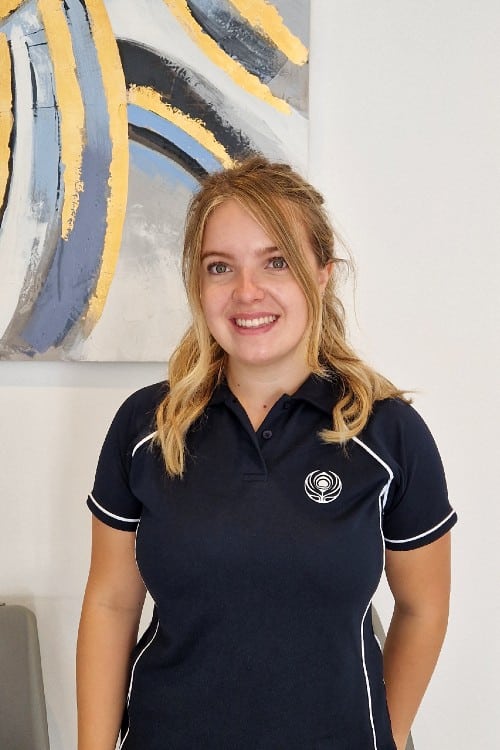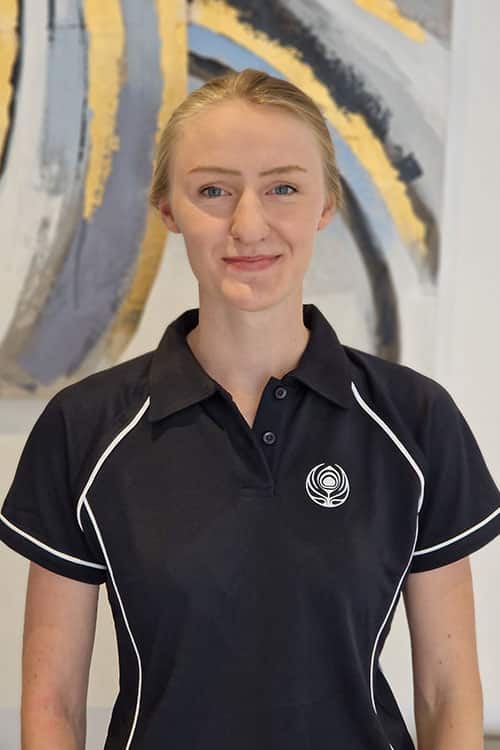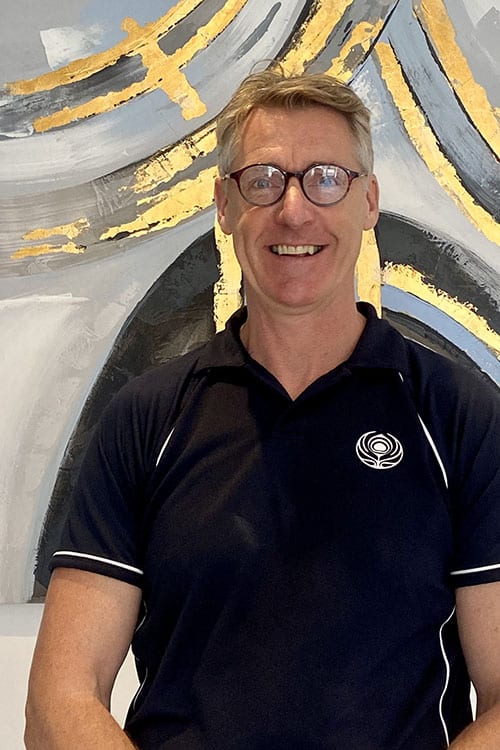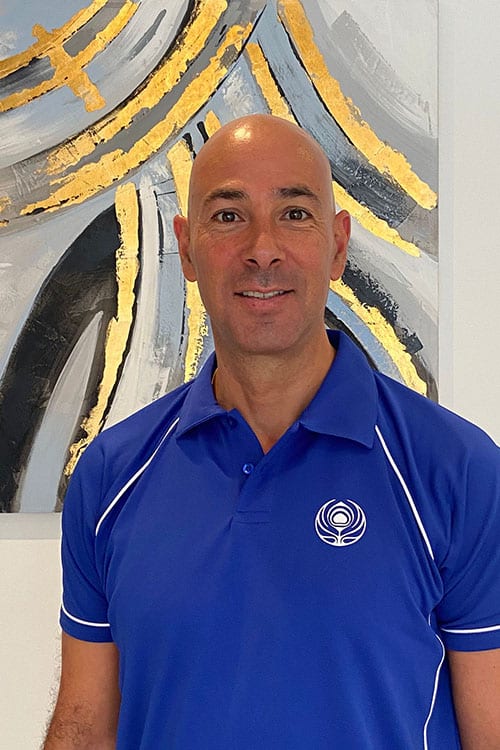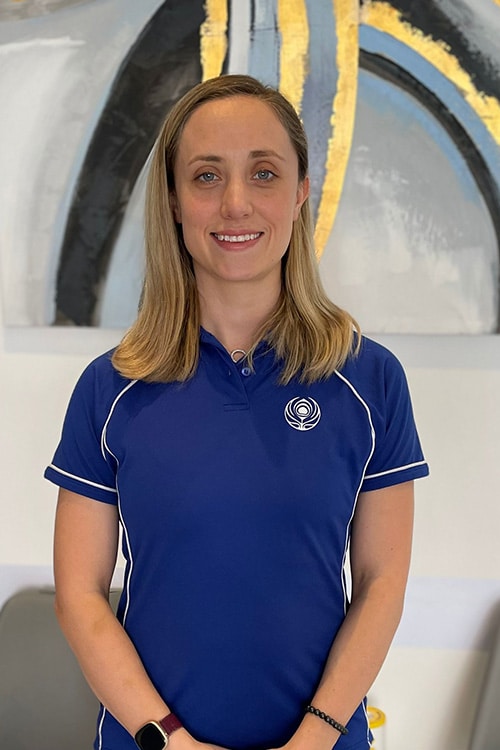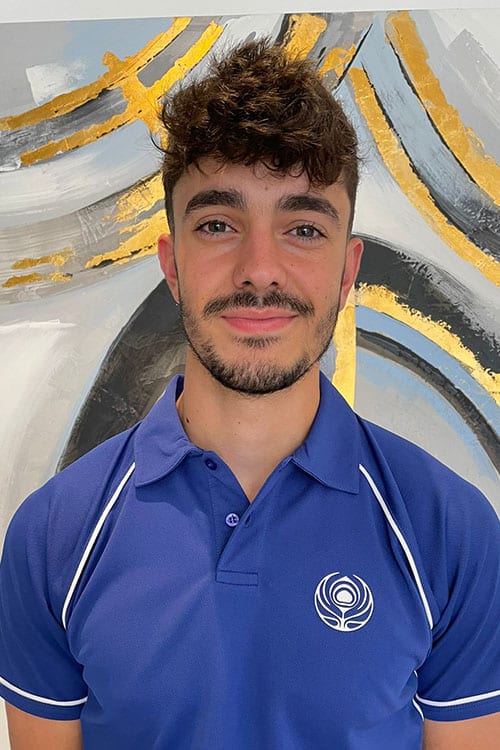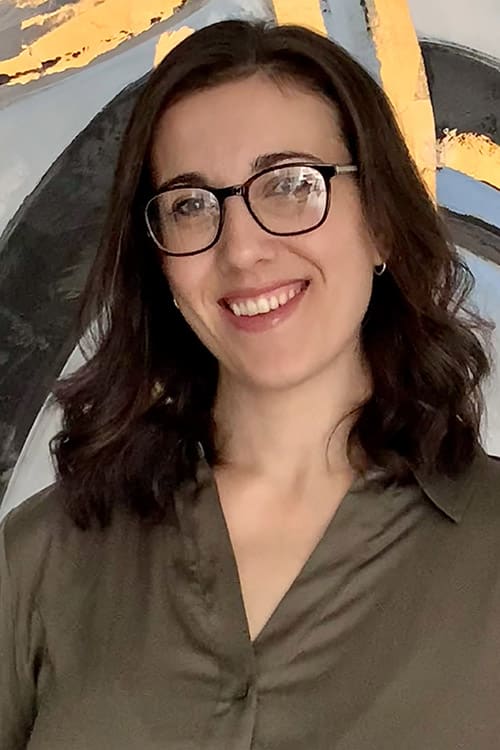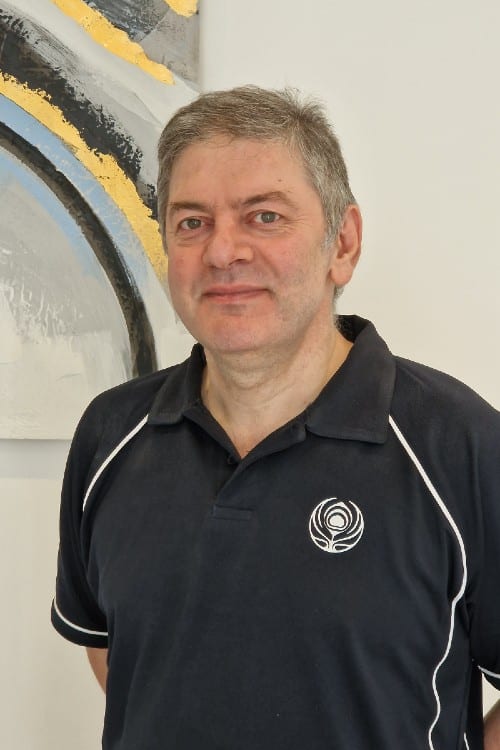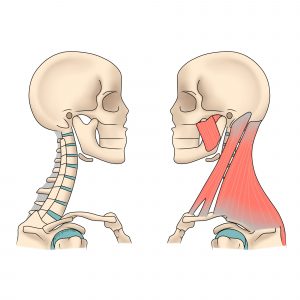Where does it hurt?
Find out how osteopathy and massage can help you with a wide range of injuries and pain.
Head
Headaches
There may be many causes for headaches, one of which can be neck, upper back or other musculoskeletal issues. These are known as Cervicogenic Headaches.
Some sufferers of headaches may need further medical investigation to rule out any serious underlying pathology, but often headaches may be eased or resolved by releasing any tension in the upper back and neck.
If there is no serious underlying problem, then treatments can include:

Migraines
A migraine can feel like a throbbing headache, usually on one side of the head. Other symptoms include feeling nauseous and sensitivity to light.
It’s not always entirely clear in each individual what may be the cause of their migraines. They’re known to be triggered by hormones, stress, tiredness and certain foods or drinks.
You may be able to reduce your migraines by avoiding things that tend to trigger them. Eating and sleeping well, keeping hydrated and regular exercise can also help.
If there is no serious underlying problem, then treatments can include:
Tinnitus
The main symptom of tinnitus is hearing a noise, such as ringing or buzzing, that is not caused by an outside source.
Treatments include:
Jaw Pain (TMJ disorders)
Temporomandibular disorder (TMD) can cause pain and stiffness around your jaw, ear, back teeth and temple.
Symptoms of temporomandibular disorder include pain around your jaw and a clicking or grinding noise when you move your jaw.
Treatments include:
- Osteopathy
- Cranial Osteopathy
- Ice to reduce inflammation and pain
- Gentle massage
Trigeminal Neuralgia
Trigeminal neuralgia is sudden, severe facial pain. It’s often described as a sharp shooting pain or like having an electric shock in the jaw, teeth or gums. It usually happens in short, unpredictable attacks that can last from a few seconds to about 2 minutes.
Treatments include:
Vertigo (Dizziness)
The main symptom of vertigo is feeling like you or everything around you is spinning.
You can help vertigo by doing things like staying still when you get symptoms.
Vertigo is often caused by a problem with your inner ear. It can also be related to chronic neck tension. Common triggers include moving your head in certain ways and inner ear infections.
Treatments include:
- Osteopathy (Epley Manoeuvre)
- Cranial Osteopathy
- Exercises prescribed by your Osteopath
Shoulder
Rotator Cuff Injuries
The rotator cuff is a group of four muscles that play a part in lifting and rotating the upper arm, as well as a role in stabilising the shoulder to avoid dislocation. The muscles run along the upper shoulder blade where they are very susceptible to injury.
A tear may result suddenly from a single traumatic event or develop gradually.
When patients present with rotator cuff tears, either to the tendons or muscles, they are unable to lift or rotate their arm with the same range of motion as before and also experience severe pain when using the arm. Pain is commonly felt at night and radiates down the arm.
Our osteopaths can help you keep your shoulder strong and flexible, and reduce the pain and weakness.
If symptoms persist or worsen, surgery may be required, and you may be referred for an X-ray or MRI to confirm diagnosis.
Treatments include:
- Osteopathy
- Dry Needling
- Ice to reduce inflammation and pain
- Avoiding strenuous activity
- Kinesio Taping
- If there is no improvement with the above, your Osteopath may refer you for further treatment like steroid injections.
Shoulder injuries
Shoulder injuries are often associated with sport, but can also be caused by everyday knocks, bumps and falls.
They include dislocations, Acromioclavicular joint (AC) injuries, the previously mentioned rotator cuff injuries, labral tears, ligament strains, muscular injuries, bursitis and fractures.
Your Osteopath will be interested in the mechanics of the injury to help understand what structures may be affected.
We advise early assessment from a doctor or osteopath, and in some cases, we refer where necessary for x-rays and scans.
Treatments include:
- Osteopathy
- Sports massage
- Dry Needling
- Ice to reduce inflammation and pain
- Avoiding strenuous activity
- Kinesio Taping
- If there is no improvement with the above, your Osteopath may refer you for further treatment like steroid injections.
Frozen Shoulder
A frozen shoulder is an extremely painful condition in which the shoulder completely or partially stiffens.
The lining of the shoulder joint, known as the ‘capsule’, is a very flexible elastic structure, giving the joint a huge range of motion. If this capsule and its surrounding structures become inflamed and contracted then that elasticity is lost, and it leads to pain and stiffness.
Frozen shoulder can appear from nowhere or is triggered by a seemingly mild injury.
The return to full movement may take several years, often going through “freezing”, “frozen” and “thawing” phases.
We recommend early diagnosis and osteopathic treatment to increase the shoulder’s range of movement and prevent further stiffness.
Treatments include:
- Osteopathy
- Dry Needling
- Ice to reduce inflammation and pain
- Exercise & Rehab
- If there is no improvement with the above, your Osteopath may refer you for further treatment like steroid injections.

Sub-acromial Impingement
Patients who are suffering from subacromial impingement usually have difficulty in reaching behind their backs, and experience pain using the arm above their head.
One of the rotator cuff muscles lies under the roof of the shoulder in a space known as the acromion. Between the tendons and the acromion is a fluid-filled sac which allows tendons to work comfortably when the arm is raised.
Simply put, if there is a subacromial impingement, the rotator cuff can’t work effectively, movement is impaired, and it is very painful.
We see this condition linked to:
- Rotator cuff strain or tears
- Calcific tendinopathy
- Chronic overuse
- Shoulder instability
- Abnormal movement patterns
Treatments include:
- Osteopathy
- Dry Needling
- Ice to reduce inflammation and pain
- Avoiding strenuous activity
- Kinesio taping
- If there is no improvement, then steroid injections may be offered by a doctor
Elbow
Tennis Elbow & Golfers Elbow
Tennis Elbow is clinically termed “lateral epicondylitis”. Golfers’ Elbow is clinically termed “medial epicondylitis”.
As the names suggest – Golfers and tennis players are susceptible to these conditions, but in reality most people don’t play sport but are subject to repetitive strains in their every day lives, such as from desk work or decorating.
Tennis & Golfers elbow is usually caused by overusing the muscles that attach to your elbow and move the wrist. If the muscles and tendons are strained, tiny tears and inflammation can develop near the bony lumps (the lateral/medial epicondyles) of your elbow. This can cause a lot of pain and may take a long time to resolve.
For tennis elbow, pain is mostly felt on the outside of the elbow, whereas golfers’ elbow is mostly felt in the inside of the elbow. The pain can be aggravated by lifting things like a cup of tea, twisting the wrist and gripping tightly.
Our osteopaths will fully assess your elbow to understand the cause and condition before making recommendations about treatment. This may combine deep soft tissue massage, articulations and stretches, as well as joint manipulation.
Ligament Injuries
Ligaments that stabilise the elbow can become sprained or torn. This can lead to instability and pain. Our osteopaths will fully assess your elbow to understand the structures affected before making recommendations about treatment.
Treatments:
- Osteopathy
- Sports massage
- Dry Needling
- Exercise and rehab
- Kinesio Taping
- Avoid overuse
- Stretching
- Diagnostic imaging
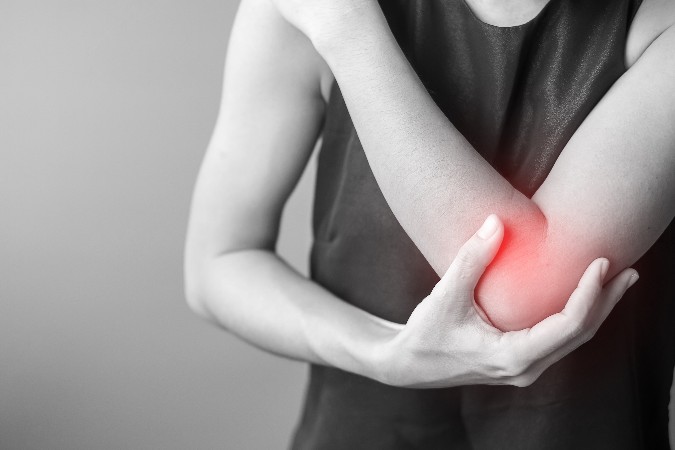
Bursitis
A bursa is a fluid-filled sac that surrounds bony protrusions of the skeleton that come into contact with surfaces, such as the shoulder, knee, and elbow. Bursitis refers to inflammation of the bursa.
The bursa in the elbow is located around the tip of the elbow. This bursa can become inflamed, painful, red and warm to touch.
Bursitis can be caused by prolonged pressure on the elbow, trauma, infection, or linked to other medical conditions like rheumatoid arthritis and gout.
Treatments:
- Osteopathy
- Dry Needling
- Kinesio Taping
- Ice to reduce inflammation and pain
- Avoiding strenuous activity
- Self-massage on the affected area
- Gentle stretches and exercises to be recommended by your practitioner
Hand & wrist
Sports Injuries of the Hand & Wrist
Hand and wrist injuries can occur to athletes and non-athletes alike. Most of the commonly identified hand sports injuries do occur in athletes and are specific to the type of activity or sport that causes them.
However, even daily activities can cause or worsen injuries to the hand or wrist. Anyone who uses their bodies every day is at risk for overuse injuries.
- Bowler’s Thumb
If your thumb fits too tightly in the bowling ball, you may be at risk for injury. Your ulnar nerve, located on the inside of your thumb, may become compressed and cause numbness, weakness, pain, and tingling.
- Tendonitis
Tendonitis is a common ailment that affects athletes in just about every sport.Tendonitis also affects non-athletes from overuse of tendons in their daily lives. This ailment is inflammation, swelling, and irritation to a tendon. It’s usually caused by overuse or starting a new activity that a tendon is not used to.
- De Quervain’s Tendonitis
This is a specific condition where the tendon that runs down the forearm to the thumb becomes inflamed.
This injury is especially common in golfers and fishermen. The affected tendon also runs through the wrist, causing pain all down the arm.Participating in fly-fishing puts you at greater risk for this type of injury.
- Boxer’s Fracture
This serious hand injury typically occurs in boxers who fail to wear boxing gloves or punch an object with improper technique, causing injury.With this injury, the bones in the hand that form the knuckles suffer a break. This is an injury that warrants an immediate trip to the doctor.
- Finger Jams
This type of injury is also known as “basketball finger,” but it can occur during any athletic activity that involves the hand coming in contact with a ball.
The severity of the injury can range from a sprain or dislocation that can be corrected by pulling on the finger, to a fracture or more serious dislocation.
- Wrist Fractures
Wrist fractures are commonly seen in athletes such as snowboarders or skiers, who fall backwards and use their hands to catch themselves.
However, wrist fractures can occur with just about any athletic activity.
- Skier’s Thumb
This is also known as an ulnar collateral ligament tear.Skier’s thumb occurs when the ligament that helps your thumb with grasping becomes torn. This causes pain and weakness of the thumb, particularly when attempting to grasp.
- Handlebar Palsy
Also known as cyclist palsy, this condition occurs commonly among cyclists and mountain bikers.The technical name for this injury is ulnar neuritis or ulnar neuropathy. The injury is caused by irritation to the ulnar nerve caused by holding the handlebars of a bike.
Cyclists can adjust the height of their bicycle seat and reposition their wrists to see if this helps. If they continue to experience tingling, numbness, pain, and a weak grip, they might need medical treatment.
Treatments include:
- Osteopathy
- Dry Needling
- Surgery
- Medication
- Exercise and rehab
Carpal Tunnel Syndrome
Carpal Tunnel Syndrome is caused by the compression of the median nerve which travels through the carpal tunnel, a narrow space in the wrist.
Treatments:
- Osteopathy
- Dry Needling
- Surgery
- Medication
- Exercise and rehab
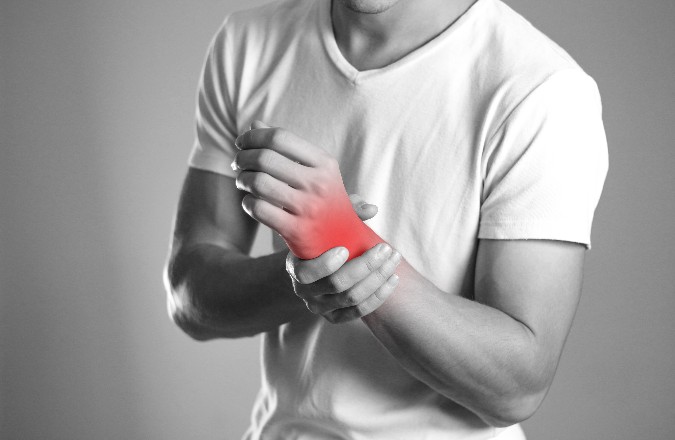
Tendon disorders (Depuytren’s contracture)
Depuytren’s contracture is when one or more fingers bend in towards the palm.
Treatments include:
- Steroid/Enzyme injection
- Surgery
Hips
Arthritis
When joint surfaces become rough and irregular due to bony growths (known as osteophytes), it is known as osteoarthritis. This can happen in any joint such as the shoulder, knee and hip.
There are four stages in arthritis: minor, mild, moderate, and severe.
It is only when osteoarthritis becomes severe that hip replacement surgery may be warranted due to the bone–on–bone contact.
In the minor, mild and moderate stages, however, the majority of pain is caused by the soft tissue surrounding the joint. In this case, the hip joint.
Our osteopaths can assess and treat the soft tissues such as the ligaments, tendons and muscles surrounding the hip to help alleviate some of the symptoms.
This can include deep soft tissue massage, articulation, stretching while also addressing other issues that may have been caused by the arthritis, including exercise and rehab advice. In chronic cases, we may use shockwave therapy to relieve some of the symptoms.
- Osteopathy
- Sports massage
- Kinesio Taping
- Exercise and rehab
Trochanteric bursitis
Trochanteric bursitis is inflammation (swelling) of the bursa (fluid-filled sac near a joint) at the outside point of the hip known as the greater trochanter.
When this bursa becomes irritated or inflamed, it causes pain in the hip and can be red and warm to touch.
- Osteopathy
- Ice to reduce inflammation and pain
- Avoiding strenuous activity
- Kinesio Taping
- If there is no improvement then steroid injections may be offered by a doctor
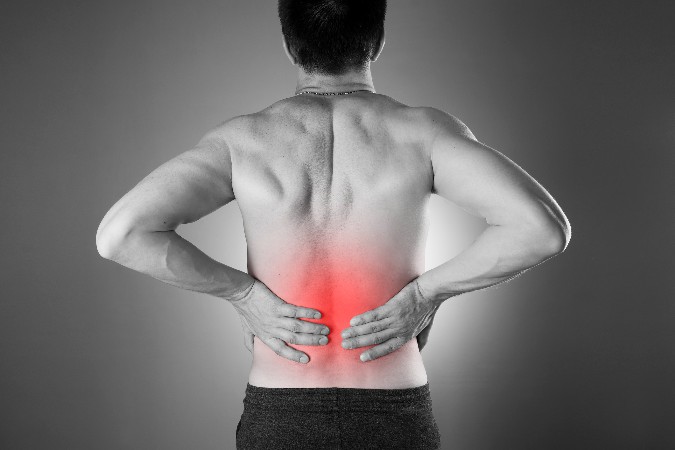
Tendinopathies & Muscle Strains
Tendinopathy is a term used to describe an inflamed tendon that has failed to heal.
A muscle strain is tiny tears in the muscle. These can however lead to bigger tears and eventually a full rupture.
Treatments include:
- Osteopathy
- Dry Needling
- Ice to reduce inflammation and pain
- Avoid strenuous activity
- Kinesio Taping
- Exercise and rehab
Knee
Arthritis
When joint surfaces become rough and irregular due to bony growths (known as osteophytes), it is known as osteoarthritis. This can happen in any joint such as the shoulder, knee and hip.
There are four stages in arthritis: minor, mild, moderate, and severe.
It is only when osteoarthritis becomes severe that hip replacement surgery may be warranted due to the bone–on–bone contact.
In the minor, mild and moderate stages, however, the majority of pain is caused by the soft tissue surrounding the joint. In this case, the hip joint.
Our osteopaths can assess and treat the soft tissues such as the ligaments, tendons and muscles surrounding the hip to help alleviate some of the symptoms.
This can include deep soft tissue massage, articulation, stretching while also addressing other issues that may have been caused by the arthritis, including exercise and rehab advice. In chronic cases, we may use shockwave therapy to relieve some of the symptoms.
Treatments include:
- Osteopathy
- Sports massage
- Kinesio Taping
- Exercise and rehab
Ligament injury
Ligaments stabilise the knee but can become sprained or torn. This can lead to instability and pain.
Treatments:
- Osteopathy
- Dry Needling
- Sports massage
- Exercise and rehab
- Kinesio Taping
- Avoid overuse
- Stretching
- Diagnostic imaging
- Surgery
Bursitis
Bursitis in the knee is also called goosefoot bursitis or Pes Anserine bursitis. The Pes Anserine bursa is located between the shinbone and the three tendons of the hamstring muscles, on the inside of the knee. This type of bursitis may be caused by lack of stretching before exercise, tight hamstring muscles, being overweight, arthritis, or out-turning of the knee or lower leg.
Treatments include:
- Osteopathy
- Dry Needling
- Kinesio Taping
Ice to reduce inflammation and pain - Avoiding strenuous activity
- Self-massage on the affected area
- Gentle stretches and exercises to be recommended by your practitioner
Meniscal injuries
The meniscus is tough, rubbery cartilage that acts as a shock absorber between your tibia (shinbone) and femur (thighbone).
It is easily injured if you apply a rotating force while your knee is weight-bearing. A partial or total tear can occur when you quickly twist with the upper leg whilst the foot remains still – so this is a common injury for footballers, rugby players etc.
Your symptoms are likely to include, pain when straightening knee as well as on/around the knee, swelling, and the knee can feel like it locks, or it might give way suddenly when you put weight through it.
- Osteopathy
- Sports massage
- Exercise and rehab
- Kinesio Taping
- Avoid overuse
- Stretching
- Diagnostic imaging
- Surgery
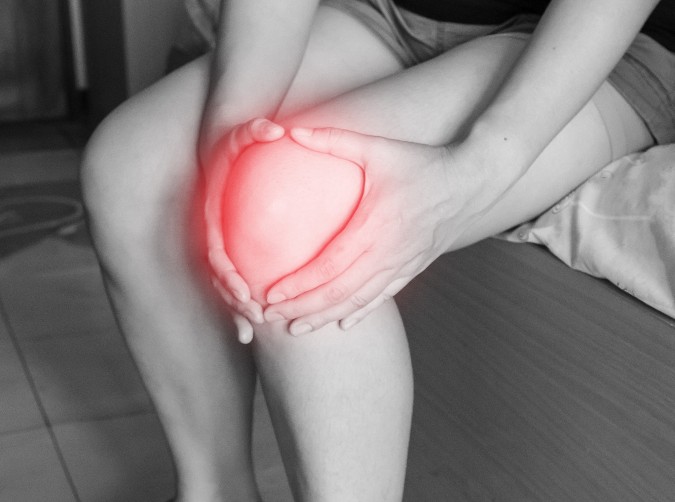
Osgood Schlatters Syndrome
Osgood Schlatters Syndrome is caused when the tendon that attaches underneath the kneecap pulls on the bone, causing inflammation and severe pain. This is most common in teenagers.
Treatments:
- Osteopathy
- Sports massage
- Exercise and rehab
- Kinesio Taping
- Avoid overuse
- Stretching
- Surgery
Muscle & tendon strain
Muscles and tendons of the knee can become strained or torn, usually caused by overuse.
Treatments:
- Osteopathy
- Dry Needling
- Avoid overuse
- Stretching
- Sports massage
- Exercise and rehab
Foot & ankle
Arthritis
When joint surfaces become rough and irregular due to bony growths (known as osteophytes), it is known as osteoarthritis. This can happen in any joint such as the shoulder, knee and hip.
There are four stages in arthritis: minor, mild, moderate, and severe.
It is only when osteoarthritis becomes severe that hip replacement surgery may be warranted due to the bone–on–bone contact.
In the minor, mild and moderate stages, however, the majority of pain is caused by the soft tissue surrounding the joint. In this case, the hip joint.
Our osteopaths can assess and treat the soft tissues such as the ligaments, tendons and muscles surrounding the hip to help alleviate some of the symptoms.
This can include deep soft tissue massage, articulation, stretching while also addressing other issues that may have been caused by the arthritis, including exercise and rehab advice. In chronic cases, we may use shockwave therapy to relieve some of the symptoms.
Treatments include:
- Osteopathy
- Sports massage
- Kinesio Taping
- Exercise and rehab
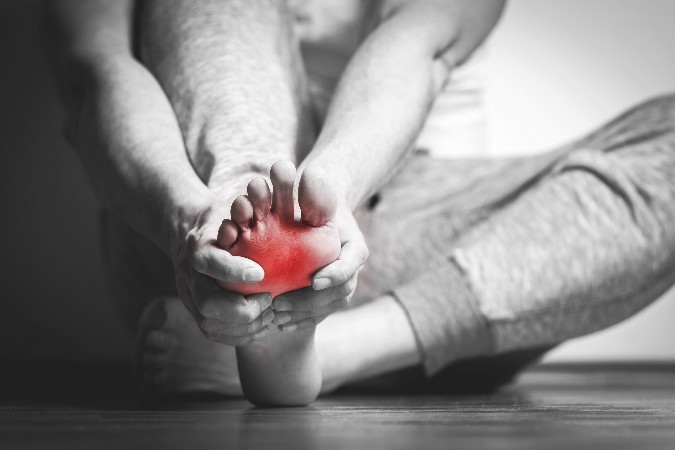
Plantar Fasciitis (Policeman's heel)
Plantar Fasciitis is pain felt in the sole, across the connective tissue between your fore and hindfoot.
This can be a debilitating condition.
Treatments:
- Osteopathy
- Sports massage
- Insoles and appropriate footwear
- Exercise and rehab
- Kinesio Taping
- Ice to reduce inflammation and pain
- Avoid strenuous activity
- Self-massage on the affected area
- Gentle stretches and exercises to be recommended by your practitioner
Achilles injury
The Achilles tendon is the largest and strongest tendon in the body. It plays an important role in many sports and is vulnerable to overloading.
Ignoring a partial Achilles strain can lead to a complete rupture several weeks later. Scar tissue begins to build up around a partial rupture, which can cause a debilitating condition that can lead to chronic pain.
Treatments:
- Osteopathy
- Exercise and rehab
- Ice to reduce inflammation and pain
- Avoid strenuous activity
- Self-massage on the affected area
- Gentle stretches and exercises to be recommended by your practitioner
- Kinesio Taping
- Sports massage
Ligament Sprains
Ligaments act as stabilisers for the foot and ankle but they can get damaged or torn. This can lead to instability and may need manual treatment or surgery if it is too severe.
If you do not properly rehabilitate your ligaments, you may suffer with chronic pain and permanent instability.
Treatments:
- Osteopathy
- Dry Needling
- Kinesio Taping
- Sports massage
- Exercise and rehab
- Ice to reduce inflammation and pain
- Avoid strenuous activity
- Self-massage on the affected area
- Gentle stretches and exercises to be recommended by your practitioner
Shin splints
Shin splints refers to a pain felt in the inside or outside of your shin bone. The pain is usually described as pressure, tightening or cramping. It reaches a point where running can be unbearable.
Shin splints are often caused by muscle overload, usually from running.
Treatments:
- Osteopathy
- Insoles and appropriate footwear
- Exercise and rehab
- Kinesio Taping
- Sports massage
- Ice to reduce inflammation and pain
- Avoid strenuous activity
- Self-massage on the affected area
- Gentle stretches and exercises to be recommended by your practitioner
Neck
Whiplash
Whiplash is caused by a violent jolting of the head back and forth, usually as a result of a sudden impact.
Treatments:
- Osteopathy
- Ice to reduce inflammation and pain
- Avoiding strenuous activity such as lifting and twisting
- Gentle stretches and exercises to be recommended by your osteopath

Muscle strain
A muscle strain or pulled muscle occurs when your muscle is overstretched or torn. This is usually caused by fatigue, overuse, or improper use of a muscle.
Minor muscle strains can take a few days to a couple of weeks to heal.
Treatments:
- Osteopathy
- Dry Needling
- Sports massage
- Kinesio Taping (KT)
- Initially use ice to reduce inflammation and pain
- Avoid strenuous activity
- Gentle movement
Disc injury
Between each vertebra there is a gel-like structure, called a disc (or intervertebral disc). This disc acts like a cushion between the vertebrae to absorb shock.
Sometimes, however, this disc can become damaged. To make it simple, think of the disc like a “donut” with jam in the middle.
If there is pressure put upon the disc it can “bulge”.
As the bulge increases, the dough part of the donut (annulus fibrosus) can become torn, often caused by lifting and twisting injuries.
This can then allow the jam part of the donut (nucleus pulposus), to escape. We then call this a herniated or prolapsed disc (sometimes referred to as a “slipped-disc”).
This jam can, in some cases, end up pushing on a nerve, causing more pain, often down the arms.
Osteopathic treatment combines deep soft tissue massage, articulation and stretches to decompress the spine and take some of the compression off the disc and/or the nerves. Joint manipulation may also be warranted.
Treatments include:
- Osteopathy
- Ice to reduce inflammation and pain
- Avoiding strenuous activity such as lifting and twisting
- Gentle stretches and exercises to be recommended by your osteopath
Note: Long-term, severe disc injuries may need imaging to determine whether steroid injections or surgery are warranted.
Facet joint
In every vertebra there are small joints called facets. These allow movement to occur in the spine.
Sometimes these joints can become “locked”. This usually occurs from an injury, or from repetitive bad posture, such as sitting at a desk badly for a long period of time. The vertebra’s movement then becomes restricted, and the muscles surrounding it become tight and may even spasm. This can cause a huge amount of pain.
Osteopathic treatment combining deep soft tissue massage and possibly joint manipulation means this can often be significantly improved or resolved within a few treatments.
Treatments:
- Osteopathy
- Ice to reduce inflammation and pain
- Avoid strenuous activity
Thoracic spine & ribs
Muscle strain
A muscle strain or pulled muscle occurs when your muscle is overstretched or torn. This is usually caused by fatigue, overuse, or improper use of a muscle.
Minor muscle strains can take a few days to a couple of weeks to heal.
Treatments:
- Osteopathy
- Dry Needling
- Sports massage
- Kinesio Taping (KT)
- Initially use ice to reduce inflammation and pain
- Avoid strenuous activity
- Gentle movement
Rib pain
Pain in the mid–back can be caused by the ribs.
The ribs attach to the spine at a point called a “rib head”. The rib head can move slightly and become locked, which then causes the muscles around the rib (called the intercostal muscles) to tighten and spasm to protect the rib.
This can be very painful, especially when you take a deep breath.
Osteopathic treatment can be very beneficial in combining deep soft tissue massage and possibly joint manipulation. Manipulation of a rib head to correct the problem, can often cause very quick relief although it may take a few treatments to completely resolve.
Treatments:
- Osteopathy
- Ice to reduce inflammation and pain
- Avoid strenuous activity
Facet joint
In every vertebra there are small joints called facets. These allow movement to occur in the spine.
Sometimes these joints can become “locked”. This usually occurs from an injury, or from repetitive bad posture, such as sitting at a desk badly for a long period of time. The vertebra’s movement then becomes restricted, and the muscles surrounding it become tight and may even spasm. This can cause a huge amount of pain.
Osteopathic treatment combining deep soft tissue massage and possibly joint manipulation means this can often be significantly improved or resolved within a few treatments.
Treatments:
- Osteopathy
- Ice to reduce inflammation and pain
- Avoid strenuous activity
Chest/Sternal Pain (Costochondritis)
Costochondritis is inflammation where your ribs join your breastbone. It causes sharp pain in the middle of your chest, when moving or breathing.
Costochondritis often gets better after a few weeks. Resting, holding a warm cloth to your chest and taking painkillers can help while it heals.
It’s not exactly clear what causes costochondritis. It’s been linked to severe coughing, chest injury and strain from exercise
Treatments:
- Osteopathy
- Ice to reduce inflammation and pain
- Avoid strenuous activity
Lower back
Muscle strain
A muscle strain or pulled muscle occurs when your muscle is overstretched or torn. This is usually caused by fatigue, overuse, or improper use of a muscle.
Minor muscle strains can take a few days to a couple of weeks to heal.
Treatments:
- Osteopathy
- Dry Needling
- Sports massage
- Kinesio Taping (KT)
- Initially use ice to reduce inflammation and pain
- Avoid strenuous activity
- Gentle movement
Facet joint
In every vertebra there are small joints called facets. These allow movement to occur in the spine.
Sometimes these joints can become “locked”. This usually occurs from an injury, or from repetitive bad posture, such as sitting at a desk badly for a long period of time. The vertebra’s movement then becomes restricted, and the muscles surrounding it become tight and may even spasm. This can cause a huge amount of pain.
Osteopathic treatment combining deep soft tissue massage and possibly joint manipulation means this can often be significantly improved or resolved within a few treatments.
Treatments:
- Osteopathy
- Ice to reduce inflammation and pain
- Avoid strenuous activity
Piriformis Spasm
Piriformis syndrome is a condition in which the piriformis muscle, located in the buttock region, spasms and causes buttock pain. The piriformis muscle also can irritate the nearby sciatic nerve and cause pain, numbness and tingling along the back of the leg and into the foot (similar to sciatic pain).
Most patients describe symptoms of acute tenderness in the buttock and sciatica-like pain down the back of the thigh, calf and foot. Typical piriformis syndrome symptoms may include:
- A dull ache in the buttock
- Pain down the back of the thigh, calf and foot (sciatica)
- Pain when walking upstairs or inclines
- Increased pain after prolonged sitting
- Reduced range of motion of the hip joint
These symptoms often become worse after prolonged sitting, walking or running, and may feel better after lying down on the back.
Treatments:
- Osteopathy
- Dry Needling
- Sports massage
- Initially use ice to reduce inflammation and pain
- Avoid strenuous activity
- Gentle movement
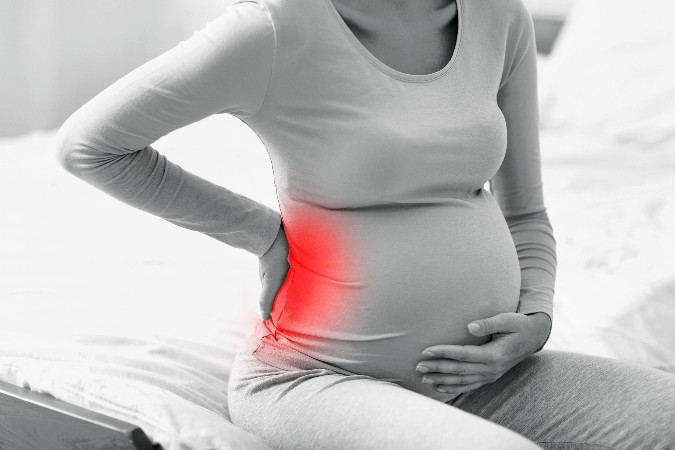
Disc Injury & Sciatica
Between each vertebra there is a gel–like structure, called a disc (or intervertebral disc). This disc acts like a cushion between the vertebrae to absorb shock.
Sometimes, however, this disc can become damaged. To make it simple, think of the disc like a “donut” with jam in the middle.
If there is pressure put upon the disc it can “bulge”. As the bulge increases, the dough part of the donut (annulus fibrosus) can become torn, often caused by lifting and twisting injuries.
This can then allow the jam part of the donut (nucleus pulposus), to escape. We then call this a herniated or prolapsed disc. (Sometimes referred to as a “slipped-disc”).
This jam can, in some cases, end up pushing on a nerve, causing more pain, often down the leg (sciatica).
Treatments:
- Osteopathy
- Sports massage
- Ice to reduce inflammation and pain
- Avoiding strenuous activity such as lifting and twisting
- Keeping mobile – try to get up and move every 20-30 minutes if possible. Gentle walking can also be helpful
- Gentle stretches and exercises to be recommended by your osteopath
Note: Long–term, severe disc injuries may need imaging to determine whether steroid injections or surgery are warranted.
